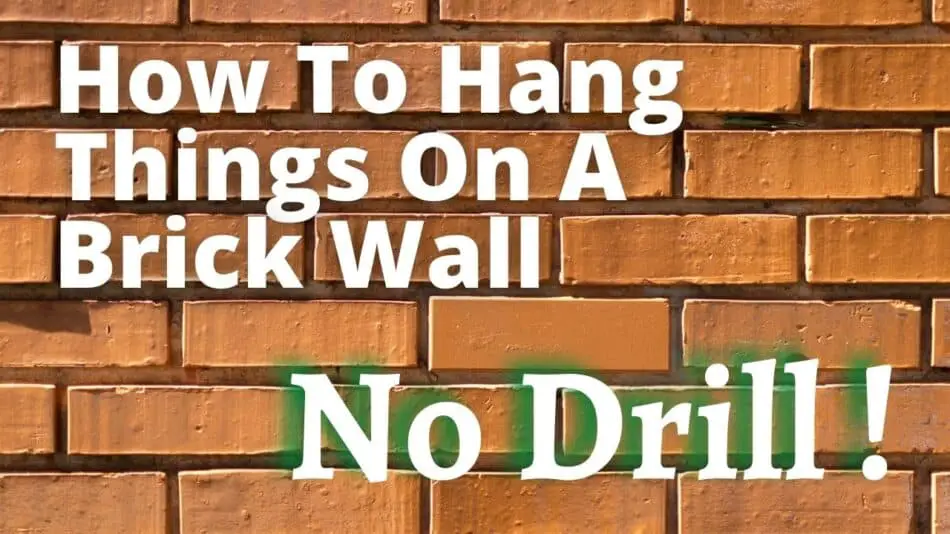Porches are great places to relax and gather in the summer, depending on where you live, the spring and fall too. What about winter? Sometimes you just need to take the chill off for a special gathering, or you need to battle the freezing winter winds and temperatures to use that space.
To keep using your front porch in the winter, assess your needs and current conditions, then move down the list of increasing warmth (and expense) to get to where you need to be.
Here is how you can use your porch in colder winter weather:
- Insulated curtains
- Heated seats
- Mug warmers
- Drop Down Panels
- Portable Heater
- Under Rug Radiant Heater
- Add Door
- Add Roof
- Seasonal Wall Panels
- Insulate Door & Ceiling
- Indoor/Outdoor – Gas/Electric Fireplace
- Ceiling Fan with Reversible Direction
- Seasonal Insulated Wall Panels
- Door Sweep Insulation
- Weatherstripping
- Caulking
- Seasonal Insulated Ceiling Panels
- Remodel into 3 Season Room
Winterize Your Porch for Chilly Evenings- Occasional Temporary Warmth
- Cut Down The Wind
The first thing to do is cut the wind, they don’t report on the ‘wind chill temperature’ for nothing! People are most comfortable in outdoor spaces when the wind is mitigated, strength and gustiness. The same temperature feels more comfortable when out of the wind. (2)
If you do not have a roof to attach curtains to, you can rent a tent, or a long-term solution, plant a windbreak to cut that gust down. Renting? Read more here https://besidethefrontdoor.com/tall-outdoor-plants-in-containers-for-privacy/ about Planting in containers for privacy (also works for windbreaks!)
If you don’t want to cut out the light, choose outdoor vinyl clear curtains. You can even double up on curtains and hand something fabric as well to soften the look, like sheers, or thin unlined curtains for an opaque effect. I share my favorites, even custom-made, on my resource page!
To keep the curtains from blowing around, remember to use curtain weights to weigh down the lower hems, (quick links on my resources page for my favorites hacks in several weights for different applications). You can even mount a second curtain rod (or thick heavy rope for easy removal!) at the base of the curtains for gusty areas. No across doorways of course!
If you will do night entertaining, get some light-blocking curtains to reduce the shadow puppet show you will make on the curtains for the neighbors. Or invite them over, no need for them to miss out on the party!
2. Heated Seats
These are great for an inexpensive, no renovations warmth boost for your porch! Great for sitting on your porch and visiting with friends! When your bottom seat is warm, the rest of you follows. There are heated seats that you plug in, battery-operated, preheat, and reflect your own heat. Most porches don’t have convenient outlets and it is not a good idea to use extension cords for heating items, so I have only heated seats on my wish list on my resources page. There you can also take with you to the game, or in the car, or outdoor movie night. No cords holding you back!



This one is battery powered and you can even charge your cell phone at the same time!
This one is durable, lightweight, and waterproof!
This one uses those hand and body warmers you get separately to last for hours and hours! Do you want lots of lasting heat? Pop in fresh warmers!
3. Mug warmers
No, you can’t warm your porch with mug warmers…. but…If you want your porch for sitting down, relaxing with a book, or with friends drinking coffee, hot chocolate, hot cider, or a hot adult beverage…Then mug warmers are a natural fit! You can also use them to keep warm scented (in glass containers, like my favorite, Trapp candles) candles without the hazard of an open flame to catch on the curtains, or your dear pooch to wag his tail in. Prewarm the candle in the microwave to start the scent immediately, and keep smelling good, and release the scent on the warmer. Do be aware, if you melt the candle completely in the microwave, that is not a problem because it is all contained in the glass container, but the wick will sink to the bottom. Either retrieve before cooling with a spoon, or keep that candle for just mug warmer use.


Cold Evenings- Frequent Temporary Warmth
4. Drop Down Panels
These are a great idea for the conversion of a porch with lots of adjustabilities, without the permanence and expense of hard seasonal panels. These drop-down panels can keep the pollen or leaves from covering your porch and porch furniture. They can keep out that sudden rain squall from soaking everything on your porch, and they do not have to interfere with your curtains either! My favorites are see-through so no blocking the view either, and let in the solar heat gain in the winter when the sun is shining! Close the curtains if you don’t want to see out, or see in… I did some research and found a great video for DIY these vinyl ones for your porch! Also, a few ready-made commercial products with other features you can incorporate into your DIY panels, or buy ready-made and start enjoying right away! Click here for inspiration and ideas. Click on these links to see short videos clips of pre-made products with great ideas to incorporate into DIY panels too!
Example pictures for inspiration
https://www.builditsolar.com/Projects/Sunspace/SolarRooms/PorchEnclosure/VinylPorch.htm
Premade Vinyl curtains video https://www.youtube.com/watch?v=otD2pWExk1A
5. Portable Heater
Yes, portable heaters seem like a no-brainer, but, there is so much more to heaters than I ever imagined! I did extensive research about heaters to add to the porch and found several that really got me excited. Most are portable, and so have more permanent installation options if you decide to go right to idea 17, and build out a 4 season room. There are so many choices, good and bad. Be sure to check out my resource page to take advantage of my days of research, to see the specific heaters that really made an impression on me both in quality and safety! Be sure to check out my resource page to take advantage of my days of research to see the specific heaters that really made an impression on me both in quality and safety!
Not Recommended–
-Oil-filled Radiant heaters just take too long to heat up the porch, and there is not enough insulation on the porch to take advantage of the gentle, slow, long-term heat these provide.
-Propane patio heaters, unless you have good ventilation (which we are trying to avoid when you are keeping your porch warm). Keep these to the open-air spaces of the yard or open patio so you don’t carbon monoxide gas yourself or your guests! https://www.northwesternenergy.com/docs/default-source/documents/customercare/propanesafety.pdf
Good– portable electric plug-in traditional, with blower, radiant heater. You will need several and if possible see #13, ceiling fan, to keep the heat circulating rather than just rising up and out your (most likely) uninsulated roof. This includes the smaller, portable, electric fireplaces if you want to step up your design game!
Better- Infrared heater. This type of heater heats objects, like you and your guests, not the air, so is very efficient. The heat is instant, you do not have to plan ahead when you are going to use your space to get it heated up. There are many styles of infrared heaters, some mount on the ceiling or walls, some are tall free-standing, some are short movable or mounted on the floor.
The infrared heaters mounted overhead work well and preserve your floor space, however, people sitting under overhead heaters do notice their head warmer than their body, which can be uncomfortable. Use this one in moving around applications, not sitting down for a meal application.
I really like this one instead on my resource page, it is free-standing and heats the lower half (instead of just your head!), you can move it around too.




6. Under Rug Radiant Heater
This is not for your whole carpet, and not for under the whole space, just under a small rug to warm your feet. Having your feet warmed sometimes is all you need to take the chill off a space. Just right for sitting and enjoying a view, good conversation with a friend, or yoga.
I know I am repeating myself, but I have links for my recommendations on my resource page for these too.
7. Add Door
Yes, add a door. Not just a screen door, or a curtain door… take a step further up the warmth ladder towards a 3 season room and add a real, insulated door.
8. Add Roof
If you do not have one, add a solid roof. This is a link to a video with a quick overview, great for you to decide if this is a job you want to take on yourself or hire out! Really, I was very impressed with this quick video! https://www.youtube.com/watch?v=tfd9VfkrBMw
Cold Days- Intermittent Extended Warmth Hard Seasonal Panels:
9. Screens, glass, or plastic panels that custom fit into your spaces between porch roof supports. This is a real start on converting the space into a 3 season room. You can either have screens that come out when you put in the clear vinyl, plastic, or glass panels or windows. Think like storm windows for your porch. You can also leave year around the screens and add the solid panels in the fall, and takedown for the summer.
10. Insulate Floor
Yes, start with the floor, or more precisely, under the floor. As heat rises up, up, and away, cold air naturally rushes up from the floor to replace it, and nothing is a colder feeling than that deep cold from under the porch blowing past your feet. Depending on your specific climate, there is much controversy about vapor barriers and where to put them. Vapor barriers are to prevent moisture from warm moist humid air from condensing on cold building materials where it would promote mold, mildew, and rot. The vapor barrier goes on the warm side of the wall for the longest time of the year. In the cold climates, (where you heat the space for the greater portion of the year, it is the coldest to the inside, under the drywall. In the humid, hot climates, where you cool the inside for the greater portion of the year, it is out the outermost section of the wall. If unsure, check out these resources. This includes a map of the US and shows where each use (or non-use) of the vapor barrier is properly used. https://www.certainteed.com/insulation/resources/do-i-need-vapor-barrier/
Here is a link to a very comprehensive article on hows, whys, and types of vapor barriers. A good understanding of these concepts will help you make the right choice regardless of where you live. https://www.buildingscience.com/documents/digests/bsd-106-understanding-vapor-barriers
Here is a brief article with illustrations that explain the concept basics. https://www.energyvanguard.com/blog/75130/What-Happens-When-You-Put-a-Plastic-Vapor-Barrier-in-Your-Wall
Go underneath and insulate with(or without) a vapor barrier, fiberglass batting, rock wool, hard styrofoam sheets, spray foam insulation, or a hard barrier or wire netting( to keep out critters from the insulation). You can forgo the vapor barrier with spray foam insulation because it makes a watertight seal. If you find you do need a vapor barrier (and many of you will) this is a great comprehensive video that lays out the difference in several types and choosing the right one for you. You do not want the one that smells like cat pee in 3 years! https://www.youtube.com/watch?v=Si_KxdVkg5U
11. Insulate Door
Cracks, edges, and door sweep. Make sure the door hangs and swings well while you are there anyway, lubricate the hinges (gotta love WD-40!), and do any repairs to the actual door or hanging of the door so that it swings easily. Depending on the size of the cracks around and under the door use a size that fits the space. The door should still close easily. For instance, if you use a rubber-type round hollow strip of weatherstripping, it should only be compressed 60-80% when the door is closed, more than that will shorten the life of the weatherstrip, and not insulate any better. Here is a link to a good short video on caulking gaps and spray foaming large gaps in your doors. https://www.youtube.com/watch?v=KZgSdtQXwK0
12. Insulate Ceiling
Whenever you want to heat or cool a space, insulation is the first thing I think about. Insulation is all about keeping heat from moving through space. Either moving into space in summer making it hotter, or moving out of the space, making it colder in the fall/ winter. How exactly to insulate this best will depend on your exact situation. Is this a 3 season room that will be heated and cooled on a regular basis? Is there an attic above? Is the ceiling space attached and open to the house attic space? This will require the expertise of a builder, and there are several really helpful forums online to help determine the best way to tackle this project. https://www.finehomebuilding.com/forum/porch-ceiling-insulation
Here is a link to a website that DIY spray foam their porch ceiling, with pictures and well done. Definity is worth a look at if you decide to go that route. http://www.ouroldrowhouse.com/2012/05/15/at-long-last-insulating-the-porch-ceiling/
Please refer to the links in the insulate floor section that refer to vapor barriers and finding if you need one, which side it goes on in your climate, and choosing the right product.
13. Under Flooring Radiant Heating
For underfloor radiant heating, there are several options to choose from, depending on if you are building or re-building, and depending on your type of heating system. If you are retrofitting a current floor, and you have hot water heat, this is a great DIY video on installing this type. It is full of great tips during installation to prevent rookie mistakes. https://www.youtube.com/watch?v=9qQ5Pxgsknc
14. Indoor/Outdoor Gas/Electric Fireplace
A fireplace, either electric or ventless gas is a great idea for cozying up the front porch. An electric is quick and easy, just move and plugin. Gas is a more permanent installation and gas will need to be available. Do contact a gas heat pro for this. Also, important, portable gas heaters are meant for patios and open spaces, not for front porches, and might be dangerous!



Electric fireplaces can be just what you need to both warm-up spaces and be a great ambiance!
15. Ceiling Fan with Reversible Direction
Just like with fans inside, ceiling fans are great for the HEATING season. Have the direction move air up. It circulates the air in the space, moving the heat around the space without blowing down on you. This reduces cold pockets and stops all the heat from sitting up at the ceiling, the movement forces it to circulate around the entire space. Brilliant!
Sub-freezing Temperatures- Persistent Durable WarmthSeasonal
16. Insulated Panels
Want the porch open air in the summer? Maybe just screens? Close it off for the winter with panels that fit right in where your ‘window’ or screen openings are. Double-layer plastic or vinyl for better insulation value, or full-on regular home windows. You can even have some full insulation and wood panels, alternating with clear frames. This is where your imagination can fly! Fabricate yourself or hire a carpenter to build. These would be custom, so pre-made most likely not do.
17. Insulated Door with Crack or Edging Insulation
-door sweep
-weatherstripping
-caulking
18. Remodel into 3 or 4 Season Room
I touched on this a bit on the removable insulated panels, but this is a more permanent, less removable option. May end up being as or more affordable than the removable panels, but less flexible. Click Herehttps://www.homeadvisor.com/cost/outdoor-living/build-a-patio-enclosure/ to go to Home Advisor for cost estimates to enclose a patio, typically between $8,281 – $24,348 as of September 2020 in the US.
19. Bonus Idea, Invite guests inside 🙂
-
Water New Trees & Flowers – Volume, Frequency & Best Tips

After transplanting trees, shrubs, annuals, and perennials, into your landscape, watering will be first on your list of concerns. Getting this right will solve the number 1 reason why plants
-
Should You Buy It? Cercis canadensis ‘Flame Thrower’ Redbud

If you will take the time to make sure this tree remains vigorous, it is well worth it! A stellar new tree with loads of color and interest even when
-
Japanese Maples W/ Unusual Peach Color on New Leaves In The Spring

ACER CIRCINATUM ‘SUNNY SISTER’ 6-8 6-7 peach lt green yellow/ orange Amoenum upright ACER ELEGANTULUM X PALMATUM ‘JOHNNIE’S GIANT’ 6-9 FAST 15 Peach dk green yellow/ orange Matsumurae upright ACER
-
What Japanese Maples Are Orange In The Fall?

Latin name zones height 10-15 yrs spring color summer color fall color leaf type tree shape ACER JAPONICUM ‘EMMETT’S PUMPKIN’ FULL MOON 5-9 12-15 org/over green dark green orange Palmatum
- “Thermal performance of radiant heating floors in furnished enclosed ….” https://www.sciencedirect.com/science/article/pii/S1359431110005302. Accessed 28 Mar. 2019.
- 2. D. Walton,V. Dravitzki,M. Donn, “The relative influence of wind, sunlight and temperature on user comfort in urban outdoor spaces”, Building and Environment, Elsevier, September 2007






